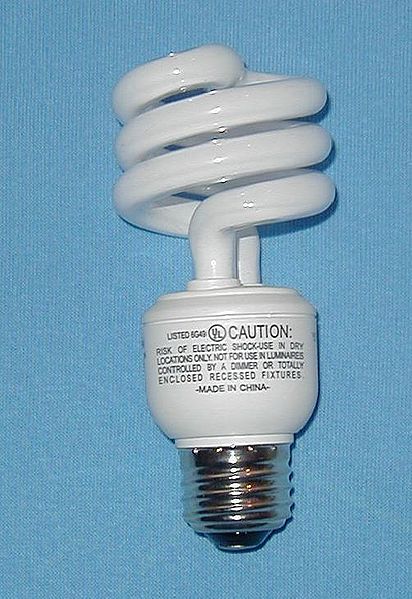| << Chapter < Page | Chapter >> Page > |

Already newer, more efficient technologies are hitting the market – light-emitting diodes (LEDs) – which use less than 25 percent of the energy of an incandescent light and last at least 15 times longer, if it has the ENERGY STAR rating. ENERGY STAR is the government-backed symbol for energy efficiency recognition. LEDs are small light sources that become illuminated by the movement of electrons through a semiconductor material ( Figure Solid State Lighting (SSL) ). The technology is still evolving and not all LED lights are created equally. LEDs are more expensive and will have a longer pay back time, but they also last longer.

If CFLs were used in all homes, the most advanced linear fluorescent lights in office buildings, commercial outlets and factories, and LEDs in traffic lights would reduce the percentage of electricity used for lighting in the world from 19 percent to sever percent. That’s equivalent to 705 coal-fired power plants.
ENERGY STAR also ranks equipment for efficiency from refrigerators to air conditioners to computers and televisions. Policies and financial incentives encourage people to buy more energy efficient products which tend to be more expensive. However, by saving on energy costs consumers can recuperate the investment. Refrigeration makes up 9 percent of household energy use. Refrigerators have gotten more efficient from 3.84 cubic feet per kilowatt hour per day in 1972 to 11.22 cubic feet per kilowatt hour by 1996 ( Figure Average Efficiency of New Refrigerators in the United States (1972-1997) ). The efficiency of an average new refrigerator has increased dramatically. New technology, increasing price of electricity, and anticipated energy efficiency standards contributed to increased efficiency in new refrigerators. The National Appliance Energy Conservation Act of 1987 set minimum efficiency standards for 13 product types, including refrigerators. After 1993, no refrigerator could be sold that did not meet the standards. Standards were updated again in 2002. However, 3 percent more households had two or more refrigerators in 2001 compared to 1980, partially reducing the effect of increased efficiency, especially since the second refrigerator tends to be less efficient.
Today, consideration should be given to electronics in purchasing. Laptops, for instance use considerably less electricity than desktops and flat screens less than the old cathode ray tube (CRT) monitors. New HD televisions use more energy than older analog TVs. Also, there are many appliances that even if turned off, draw power from the grid. This is sometimes called phantom load or vampire power . Although it is a small amount, it can comprise up to 10 percent of home electricity use. Chargers for cell phones, digital cameras, computers, and power tools are very common sources of phantom load. Also, TVs, computer monitors, and DVD players have current whenever they are plugged in. Using a "smart" power strip can eliminate the need to manually up-plug. Plugging everything in to a strip that is control by one master device or activated by a motion detector provides the technology to replace the behavior of manually turning off and unplugging all the devices when they are not in use.

Notification Switch
Would you like to follow the 'Sustainability: a comprehensive foundation' conversation and receive update notifications?